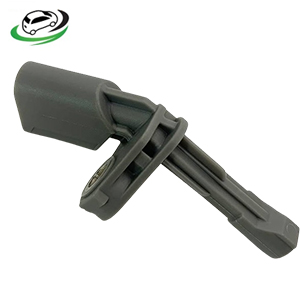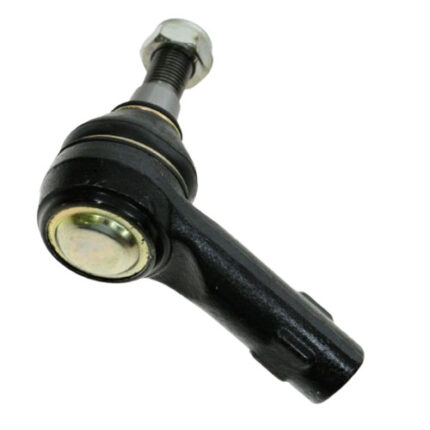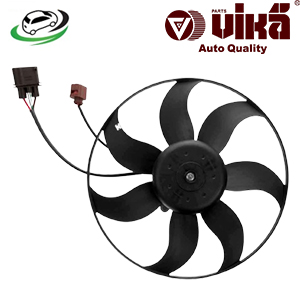-13%
Get Radiator Cooling Fan Motor A1 (8X1/XK)/A3 (8P1)/TT (8J3)/TT Roadster / VW Caddy IV MPV/CC B7/EOS (1F7/1F8)/GOLF VI/V 1K0959455DL
The radiator cooling fan motor is a vital component of a vehicle’s cooling system. It ensures that the engine operates within its optimal temperature range by assisting in the regulation of engine temperature through airflow over the radiator. This detailed overview will cover the design, function, importance, types, common issues, and maintenance of the radiator cooling fan motor.
Design and Function
Design:
- Construction:
- Fan Blade Assembly: The radiator cooling fan motor is connected to a set of fan blades. These blades are typically made of plastic or metal and are designed to pull air through the radiator to enhance cooling.
- Motor Housing: The motor housing encases the electrical components of the fan motor, including the rotor, stator, and wiring. It is designed to withstand high temperatures and vibrations from the engine.
- Mounting and Support: The fan motor is mounted to the radiator or the radiator support frame. It is supported by brackets or mounts that secure it in place and ensure proper alignment with the radiator.
- Motor Types:
- Electric Motor: Most modern vehicles use an electric fan motor. This type of motor is powered by the vehicle’s electrical system and can be controlled by various sensors and control modules.
- Clutch-Driven Fan: Older vehicles or certain high-performance applications may use a mechanical fan driven by a clutch mechanism connected to the engine. This setup is less common in contemporary vehicles.
Functionality:
- Cooling Assistance:
- Airflow Generation: The primary function of the radiator cooling fan motor is to generate airflow through the radiator when the vehicle is moving slowly or idling. This airflow helps dissipate heat from the engine coolant, preventing the engine from overheating.
- Temperature Regulation: The fan motor is activated by temperature sensors or the engine control module (ECM) when the engine temperature exceeds a certain threshold. It helps maintain the engine temperature within the optimal range for performance and efficiency.
- Operational Modes:
- Automatic Operation: In modern vehicles, the radiator cooling fan motor is often controlled automatically by temperature sensors. When the engine reaches a certain temperature, the sensor signals the fan motor to turn on and increase airflow.
- Manual Operation: Some vehicles may have manual controls that allow the driver to activate the fan motor manually, particularly in older models or specific driving conditions.
Importance of the Radiator Cooling Fan Motor
- Engine Temperature Management:
- Preventing Overheating: The cooling fan motor helps prevent engine overheating by ensuring that the radiator maintains adequate airflow. Overheating can cause severe engine damage, including warping or cracking of engine components.
- Maintaining Performance: By keeping the engine temperature within the optimal range, the fan motor helps maintain engine performance, fuel efficiency, and emissions control.
- Vehicle Reliability:
- Preventing Heat-Related Failures: A functioning radiator cooling fan motor reduces the risk of heat-related failures, such as a blown head gasket or damaged engine components.
- Ensuring Longevity: Proper temperature management contributes to the overall longevity of the engine and other cooling system components, reducing the need for costly repairs.
- Comfort and Convenience:
- Climate Control: In some vehicles, the cooling fan motor also helps regulate the temperature of the air conditioning system by managing the engine temperature. This contributes to a more comfortable driving experience.
Types of Radiator Cooling Fan Motors
- Single-Speed Fan Motors:
- Design: Single-speed fan motors operate at one fixed speed, either high or low, depending on the design.
- Application: These motors are commonly used in older vehicles or simpler cooling systems where variable speed control is not required.
- Variable-Speed Fan Motors:
- Design: Variable-speed fan motors can operate at multiple speeds, providing more precise control of airflow based on the engine’s temperature and cooling needs.
- Application: These motors are used in modern vehicles with advanced cooling systems that require varying levels of cooling based on driving conditions and engine load.
- Dual-Fan Systems:
- Design: Some vehicles have dual fan systems, which include two separate fan motors and sets of fan blades. This design provides additional cooling capacity and redundancy.
- Application: Dual-fan systems are often used in vehicles with high-performance engines or those that experience higher cooling demands.
Common Issues with Radiator Cooling Fan Motors
- Fan Motor Failure:
- Causes: Fan motor failure can result from electrical issues, worn-out bearings, or internal component failures. Overheating, physical damage, or lack of maintenance can also contribute to motor failure.
- Signs: Symptoms of fan motor failure include engine overheating, a non-functional or noisy fan, or the presence of warning lights on the dashboard indicating cooling system issues.
- Blown Fuse or Relay:
- Causes: A blown fuse or malfunctioning relay can prevent the fan motor from receiving power. Electrical issues in the wiring or control circuits can also disrupt operation.
- Signs: If the fan motor does not activate or operates intermittently, a blown fuse or relay may be the cause. Check for electrical issues or blown fuses in the fuse box.
- Worn or Damaged Fan Blades:
- Causes: Fan blades can become damaged or worn due to debris, impact, or age. Cracked or bent blades can reduce airflow and affect cooling performance.
- Signs: Symptoms include reduced cooling efficiency, unusual noises from the fan area, or visible damage to the fan blades.
- Sensor or Control Module Issues:
- Causes: Faulty temperature sensors or malfunctioning control modules can lead to improper fan operation. These components are responsible for activating the fan motor based on engine temperature.
- Signs: Inconsistent fan operation, unexpected overheating, or dashboard warning lights can indicate sensor or control module issues.
Maintenance and Inspection
- Regular Checks:
- Inspect Fan Operation: Regularly check the operation of the radiator cooling fan motor. Ensure that it activates when the engine reaches the appropriate temperature and runs smoothly without unusual noises.
- Examine Fan Blades: Inspect the fan blades for signs of damage or wear. Replace any damaged blades to maintain proper airflow.
- Electrical Connections:
- Check Wiring and Connectors: Ensure that the wiring and connectors to the fan motor are secure and free from corrosion or damage. Clean or repair any electrical issues as needed.
- Test Electrical Components: Use a multimeter to test the electrical components, including fuses, relays, and switches, to ensure they are functioning correctly.
- Cleaning:
- Remove Debris: Keep the area around the fan motor and radiator clean and free from debris that could obstruct airflow. Regularly clean the radiator and fan assembly to maintain optimal cooling performance.
- Cooling System Maintenance:
- Check Coolant Levels: Regularly check the engine coolant levels and top up as necessary. Proper coolant levels are essential for effective cooling system operation.
- Inspect Radiator and Hoses: Inspect the radiator and cooling system hoses for leaks, cracks, or signs of wear. Address any issues promptly to prevent cooling system failures.
Replacing the Radiator Cooling Fan Motor
- Preparation:
- Gather Tools and Parts: You will need a new radiator cooling fan motor, basic hand tools, and any required replacement parts such as fuses or relays.
- Consult the Manual: Refer to the vehicle’s service manual for specific instructions and specifications related to fan motor replacement.
- Remove the Old Motor:
- Disconnect Battery: Disconnect the vehicle’s battery to prevent electrical shorts during the replacement process.
- Remove the Fan Assembly: Remove any components obstructing access to the fan motor, such as the radiator shroud or cooling hoses.
- Disconnect Wiring: Disconnect the electrical connector from the old fan motor.
- Remove Mounting Bolts: Remove the mounting bolts or screws securing the fan motor and carefully pull it out of its position.
- Install the New Motor:
- Position the New Motor: Install the new fan motor into the mounting position, ensuring proper alignment with the fan blades and mounting holes.
- Secure the Motor: Reinstall the mounting bolts or screws and tighten them to the manufacturer’s specifications.
- Reconnect Wiring:
- Connect Electrical Connector: Reconnect the electrical connector to the new fan motor.
- Reinstall Components: Reinstall any components that were removed to access the fan motor, such as the radiator shroud or cooling hoses.
- Test the System:
- Reconnect Battery: Reconnect the vehicle’s battery and start the engine.
- Check Fan Operation: Verify that the new fan motor operates correctly by monitoring its activation and ensuring that it runs smoothly.
- Monitor Cooling Performance: Check the engine temperature and overall cooling system performance to ensure proper operation.
Follow us on Facebook for more parts.



